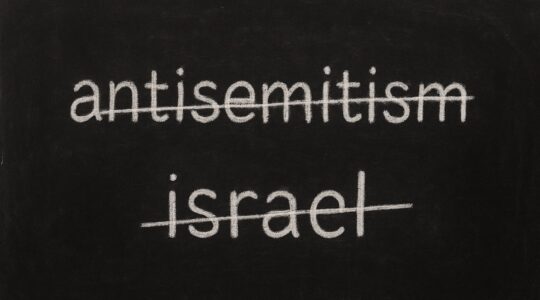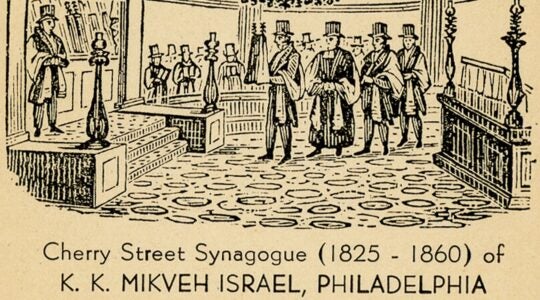Two opposing trends can be discerned within today’s American Jewish community. The first is the move to precisely define the borders and boundaries between various Jewish denominations and religious groups. On the pages of this newspaper and elsewhere, there are debates about what precisely constitutes Open, Modern, or Ultra Orthodoxy, and where exactly the boundary is between Orthodox and Conservative Judaism. On social media, this splintering and boundary-setting is even more pronounced as quasi-denominational labels like Egalitarian Traditional, Left-Wing Conservative and Modern Ultra-Orthodox proliferate.
At the same time, there is also a trend toward blurring the lines between denominations. This is expressed by those who deny that there are any real differences between Jews, as well as by those who acknowledge denominational divisions but consider themselves too sophisticated or complex to fit comfortably into any denominational box.
Each of these trends is valuable in one regard but further entrenches a problematic paradigm in another. Both those who meticulously define subgroups and those who refuse to play the labeling game take denominational designations way too seriously. If the recent and much-discussed Pew Research Center study of American Jewry is any indication, American Jews treat denominational affiliation as a function of identity and even use the terms “identity” and “affiliation”— two distinct concepts — almost interchangeably. For Pew, the opposite of a denominationally identified Jew is an unaffiliated Jew.
To be sure, it is hard to overstate the importance of Jewish identity. Through halacha, Jewish law, the ancient rabbis formulated constraints on intermingling with gentiles and established markers of Jewish identity. Through aggada, Talmudic stories, they recast narratives about Israelite identity within ancient societies as lessons on how to maintain distinctiveness and the dangers of absorbing too much from the host society. Going even further back, the question of identity is a key element of the Exodus from Egypt that we re-enact at our seders; after all, redemption would not have been possible had our Israelite forebears simply disappeared into the amalgam of enslaved peoples.
Yet contemporary discourse about identity goes too far. Whereas historically we have used identity markers to distinguish between Jews and non-Jews, today we apply the rhetoric of identity to internal denominational differences. This does not mean that such differences are not real or important, only that they should be regarded as questions of affiliation, not identity.
There are as many types of Jews as there are Jews. And it is especially common for young men and women who have completed high school and not yet settled into institutional communal life to experiment with many different forms of Jewish belief and practice.
Yet in order to participate in Jewish communal life, each Jew must decide where to pray, how to educate her children, which causes to support, and who to vote for. She therefore affiliates—with particular institutions, which are themselves affiliated with larger national organizations for various political, financial and indeed ideological reasons. After all, American religion more generally is organized denominationally.
The trouble begins when affiliation is confused with identity. Identity is what I see when I look in the mirror. Affiliation is the state of attachment to a larger group. One can affiliate with a larger group without “identifying” with it, and conversely, one can identify with a particular type of Judaism without having any institutional affiliations. There are plenty of people who affiliate with Orthodox synagogues but would not define themselves as Orthodox Jews, and plenty of Jews who identify themselves as Reform without affiliating with any Reform institutions.
Unfortunately, though, we tend to assume that anyone who affiliates with a particular group conforms to the properties of the group as a whole. Consequently, there is pressure to break things down into smaller groupings — lest, heaven forbid, one be “identified” with the wrong group — or to insist that one defies categorization.
Ideally, there would be broad understanding that there is in fact an incredible variety of Jewish experience, as the hyper-definers and the you-can’t-define-me set imply, and that we should acknowledge what binds us in addition to what divides us. In between, there are various groupings that make it easier for each individual Jew to find or create a comfort zone. But the resulting connections must not be allowed to determine what that individual Jew is.
To illustrate this point, I will take myself as an example. An observer would reasonably conclude that I am an Orthodox Jew based on my beliefs, practices, affiliations and attitude toward Jewish law. Yet I do not do what I do or believe what I believe because I am an Orthodox Jew. On the contrary, I affiliate with Orthodox institutions because, among the various options available to me, I am most comfortable with them given my lifestyle. So call me Orthodox. Or frum. Or Shomer Shabbos. Or Religious-Zionist. Or Modern Orthodox. I have made my peace with the labels. I do not insist on a string of modifiers that express what I really am, nor do I protest that really I am much too complex to be categorized so conventionally. But it is not who I am because these are labels of convenience. They do not describe any sort of identity.
So please do not make any assumptions about what I or anyone else thinks or does. There are real and significant differences between what I think and what someone else might think, but that is because I am I and she is she, not because I am tagged with one label and she with another.
Elli Fischer, a writer and translator in Israel, is a regular contributor.
The New York Jewish Week brings you the stories behind the headlines, keeping you connected to Jewish life in New York. Help sustain the reporting you trust by donating today.




